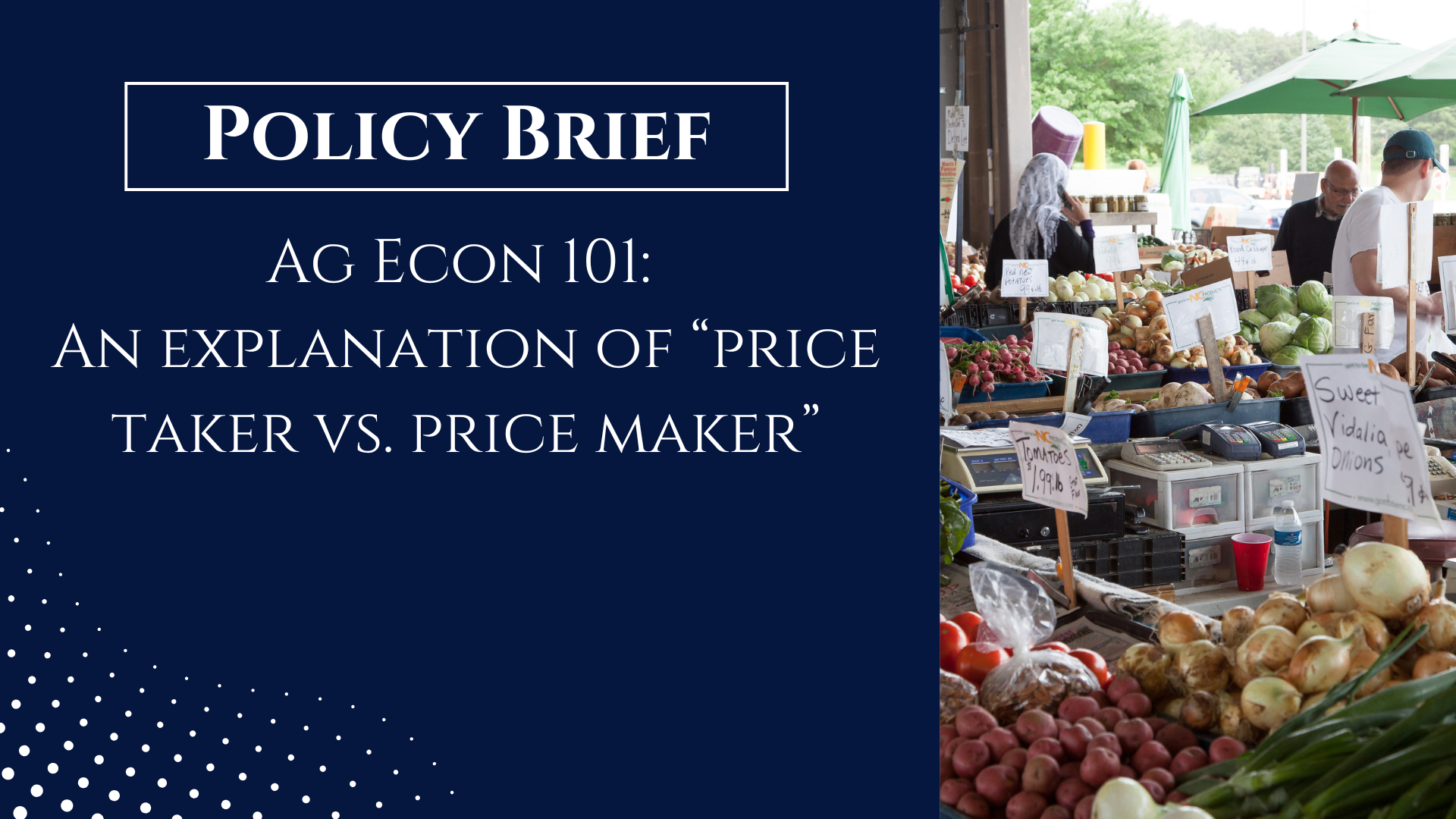Key Findings
- Washington state’s farmers and ranchers are at a distinct policy disadvantage in the marketplace.
- The phrase “price taker vs. price maker” is a short way to explain the economic status of two opposing kinds of businesses.
- A “price taker” business is one that must accept the prevailing prices of its products in the market regardless of its own operating costs.
- A “price maker” is a business that commands enough of the market share to influence the price of their product or any product that might be similar to theirs.
- The application of “price taker vs. price maker” in food production can be more difficult to identify because of the varied nature of farms and ranches.
- There are several aspects that make Washington state’s agricultural landscape unique, further complicating the “price taker vs. price maker” discussion.
- Washington state’s commodity variation – more than 300 unique offerings in a northern climate – also makes it unusual.
- When consumers pay more for better labor practices or better environmental stewardship, they are paying grocery stores, shippers, and packers, not the farmers and ranchers who bear the burden of implementing those desires.
Introduction
Washington state’s farmers and ranchers are at a distinct policy disadvantage in the marketplace. Much of the policy decisions made during the last several legislative cycles have ignored a fundamental tension in economics: “price taker vs. price maker.”
The phrase “price taker vs. price maker” is a short way to explain the economic status of two opposing kinds of businesses. Simply put, it means that some agricultural producers sell their products into a larger market where the price is set and must “take” the rate set by that market. Other products are specialized or unique and have more flexibility when choosing what to charge and can “make” the price for their products.
The simplistic description of two different bargaining positions for businesses within a market helps to make the distinction between the power structures of each type of business. When those two bargaining positions are applied specifically to agriculture, they illuminate why policy decisions can have a dramatic effect on farms and ranches.
There are several aspects that make Washington state’s agricultural landscape unique, further complicating the “price taker vs. price maker” discussion. For example, our state leads the nation in production of crops that require hand-tending or hand-picking. These specialty crops drive up the cost of production for our products through custom labor and specialized growing practices. These are all factors influencing most Washington state farms as “price takers” because they are costs that must be absorbed by the farm but are not passed on to consumers. Our farms also compete with agriculturally rich states like California, which has a longer growing season, and Texas, which has both a longer growing season and fewer regulations.
Washington state’s commodity variation – more than 300 unique offerings in a northern climate – also makes it unusual.2 States directly to the east of Washington state have much less variety, including Montana, which has a dozen different crops, and North Dakota, with 50 different crops. The competition faced by Washington and the variety of agricultural products means regulations impact each sector differently. Protection of our farms and ranches through a fundamental understanding of how policy can differently impact a broad spectrum of Washington’s agricultural producers is crucial to maintaining our economic success in the future.




